Public finance. Рубрика в журнале - Economic and Social Changes: Facts, Trends, Forecast
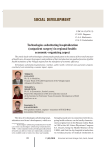
Formation of regional budget in crisis
Статья научная
As is known, in December 2009 Legislative Assembly enacted a law «On Regional Budget for 2010». The budget is formed by the conservative scenario, based on projected economic growth of 2.5%. The analysis of the main financial area of the law, conducted by ITSED RAS, showed that the current year will be a serious test of the regional budget system. The budget deficit of the Vologda region is the highest among the donors regions. It is 28%. Nevertheless, despite the tense situation, the reserves increase revenue and reduce costs in the area are available.
Бесплатно
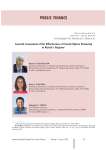
General assessment of the effectiveness of social sphere financing in Russia's regions
Статья научная
The paper presents an approach to assessing the effectiveness of social sphere financing (healthcare, education, housing and utilities sector) in regions of Russia. In the framework of the study, we test the following hypothesis: when the socio-economic situation in a region gets better, the effectiveness of social sphere financing in it reduces. The methodology for studying the effectiveness of social sphere financing in regions with different levels of socio-economic development is based on assessing the dependence of the dynamics of the indicators achieved by them and the amount of budget expenditures. To carry out the assessment, we select nine resulting indicators of the functioning of social sectors, taking into account the list of indicators for assessing the effectiveness of performance of executive authorities of constituent entities of the Russian Federation (the list was approved in November 2017 by the decree of the President of the Russian Federation) and on the basis of the presence of a statistical relation between them and the Human Development Index as a final indicator...
Бесплатно
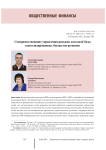
Improving the system of management of risks of the income base of regions' consolidated budgets
Статья научная
Budgetary risks of the Russian regions have been characterized by a sustained upward trend since the beginning of the 200-2009 crisis. This hinders the achievement of target indicators and fails to provide financial stability and sustainable socio-economic development of territories, which makes it important to search for solutions to the scientific issue of improving the system of management of risks affecting the income base of regions' consolidated budgets. It is necessary that the authorities made timely management decisions aimed at minimizing the impact of negative risk-contributing factors on public finances of the constituent entities of the Russian Federation. Informational and analytical basis of such operational decisions may include methodological tools of assessment of the impact of budgetary risks on the sustainability of the regional budgets' income base. However, such tool is currently missing. The novelty of the research lies in the fact that the authors have proven that when assessing budgetary risks, principles of comprehensiveness and objectivity need to be complied with, these principles imply the consideration of the risk of failure to perform the budget, the risk of imbalance and the risk expenditure non-implementation in connection with the repayment of the region's debt...
Бесплатно
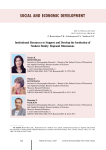
Статья научная
The article continues the set of demographic and sociological studies whose purpose is to analyze the value orientations and institutional resources that influence actors' marital and reproductive behavior. Theoretical basis of the study is represented by a wide range of works of Russian family scientists, demographers, specialists in the field of family sociology. We continue to develop the concept of a prosperous family within the framework of which we define the concept of “student family”, substantiate the tools for the research and conduct an empirical study. The main objective of the study is based on the data of a questionnaire survey of students. Moreover, it has to determine the relevance of the social policy implemented by the state and universities in relation to the development and support of the institute of student family (on the example of the Republic of Tyva). Data were obtained characterizing students' ideas about social policy measures in the interests of student families, institutional resources for the support and development of the institute of student family, and students' awareness of social support measures for young people studying in higher educational institutions. That allowed us to draw conclusions about what kind of assistance can be demanded by student families. We received the answer to the question whether students consider it necessary to support those who get married while studying at a higher educational institution. We systematize the data on the main areas of implementation of marital and reproductive behavior of Tyva students. It is revealed that social support measures will be in demand by student families. This should be taken into account when developing and implementing management decisions aimed at stabilizing the demographic situation in the region.
Бесплатно
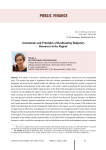
Instruments and principles of reallocating budgetary resources in the region
Статья научная
The article is devoted to studying the reallocation of budgetary resources at the intraregional level. The author has made a hypothesis that the existing instruments and principles of reallocating budgetary resources in the region hinder the effective use of the local budgetary system's capacity for developing the fiscal capacity of the entire region. The work is aimed at justifying the key principles and instruments of the modern public regional policy in the field of the intraregional reallocation of budgetary resources for developing the region's fiscal capacity. The Russian regions have become the object of the study covering the period from 2005 to 2018. In order to reveal statistical regularities, the researcher has used general scientific methods based on the official data from the Federal Treasury, the Ministry of Finance, Rosstat, regional authorities and local government bodies. The works of leading Russian and foreign scientists have composed the theoretical basis of the study. In the course of the research the author has identified the trends of budgetary reallocation in the region, as well as proposed the directions of improving its efficiency, including the set of instruments for strengthening the income basis of local budgets and the research and methodological justification for using the budgetary reallocation instruments in the region. The scientific novelty of the results includes the justification of applying the instruments and principles of the modern public regional policy in the field of the intraregional reallocation of budgetary resources, which, unlike the existing ones, rely on the effective use of the local budgetary system's capacity for developing the fiscal capacity of the entire region. The materials of the present article can be used in the educational sphere, as well as in the activities of public authorities and local government bodies.
Бесплатно
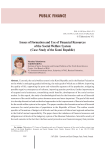
Статья научная
Currently, the social welfare system in the Komi Republic and in the Russian Federation on the whole is undergoing gradual reforming, the main goals of which are as follows: improving the quality of life; supporting the poor and vulnerable segments of the population; mitigating possible negative consequences of reforms; improving pension provision; further improvement of targeted social assistance; streamlining social benefits; development of the social services market. In this regard, the study of methodological basis for the formation and use of financial resources of the social welfare system becomes more and more important. The goal of this work is to develop theoretical and methodical approaches to the improvement of financial mechanism for the social welfare system in the region. The paper considers the formation and use of financial resources for social protection of population in the Republic of Komi. The author reveals specifics of formation of budgets of all levels and the powers of federal and regional authorities in the field of mutual responsibility...
Бесплатно
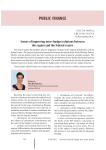
Issues of improving inter-budget relations between the region and the federal centre
Статья научная
The article studies the problems of inter-budgetary relations of the subjects of federation and the federal centre. The analysis of financial interaction between the regions of the North-Western Federal District and the federal centre has been carried out on the basis of general scientific methods. The article identifies the positive and negative sides of the development of inter-budget interaction between these regions and directions of its improvement. The results obtained can be used by the federal and regional state power bodies when forming the budget policy in the sphere of inter-budget relations.
Бесплатно
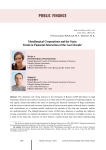
Metallurgical corporations and the state: trends in financial interaction of the last decade
Статья научная
The dominant role of big business in the formation of Russia's GDP determines its high importance both for the country's economy as a whole and for the economies of individual regions. In this regard, studies that address the issues of assessing the financial interaction of large corporations with the state are relevant and necessary. Interaction of these economic agents with each other is complex and contradictory, as in modern market conditions the interests of the state and economic entities are multidirectional. The Vologda Research Center of RAS pays attention to studying the influence of large corporations on regional development, in particular on the formation of budget revenues. As a result of the long-term research, we have formed a serious factual base that allows understanding the main interaction features of large businesses with the regional and federal budgets, to determine systemic shortcomings of the state's tax policy including those related to the taxation of profits and income of corporate owners. However, currently, there is no single mechanism in the scientific literature that can be used to most comprehensively assess the financial interaction of large businesses with the region. At the same time, the results of such an assessment can become a serious foundation for justifying many management decisions. The purpose of the study is to assess the trends of financial interaction between the state and corporations on the basis of the developed methodological tools. The authors have tested the methodology in the case of ferrous metallurgy industry. The object of the study is the financial interaction of large ferrous metallurgy corporations (PJSC “Severstal”, PJSC “MMK” and PJSC “NLMK”) with the state. The paper uses the methods of structural (weight) analysis, coefficient analysis linking the microeconomic indicators of enterprises with the macroeconomic indicators of the home regions, the index method, and the method of level estimation when creating the methodological assessment tools.
Бесплатно
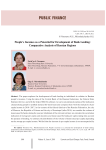
Статья научная
The paper explores the development of bank lending to individuals in relation to Russian people's incomes. Using the data of the Central Bank of the Russian Federation, the Federal State Statistics Service, and with the help of EXCEL software, we carry out statistical analysis of the indicators characterizing people's satisfied demand for bank loans and compare them with the indicators of per capita income in 2010-2017, in the context of the federal districts of the Russian Federation, the city of Moscow, the Republic of Crimea and the city of Sevastopol (after 2014): we consider the volume of loans issued by banks during the year per inhabitant of the relevant territory, we calculate the correlation indicators of average per capita cash incomes and loans issued by banks per capita taking into account the purpose of lending; we estimate the distribution of the volume of loans issued per capita depending on the average per capita income. We find that the increase in per capita income is not accompanied by a proportional increase in bank loans per capita...
Бесплатно
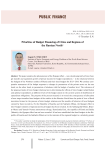
Priorities of budget financing of cities and regions of the Russian North
Статья научная
The paper analyzes the phenomenon of the flypaper effect - non-identical growth of inter-budget transfer and equivalent growth of private income for budget expenditures - in the relations between the budgets of the Northern entities of Russia and their local budgets for 2013-2016. We conduct comparative assessment of the budget response to changes in parameters of the private sector on the one hand; on the other hand, in parameters of relations with the budget of another level. The relevance of the proposed study of inter-budget relations lies in determining the effects of inter-budget redistribution and optimal expenditures at different levels of the budget system in the current system of distribution of expenditure obligations. The purpose of the present research is to reveal the consequences of allocation of non-target transfers from budgets of the entities in the Russian North from the point of view of fiscal incentives formed in the process of inter-budget relations and the models of behavior of local budgets created by these incentives...
Бесплатно
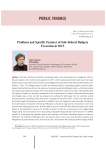
Problems and specific features of sub-federal budgets execution in 2015
Статья научная
Last year has been marked by worrying trends in the development of a budgetary crisis in Russian regions; the crisis became apparent in 2013, when regional authorities had to get into huge debts in order to provide finances for the social obligations in the framework of the presidential decrees of May 7, 2012. The budget process in 2015 was characterized by expanding negative trends in those regions that had previously been the engines of economic growth and budget donors, which contradicts the regional development strategy. The crisis response measures consist in a large-scale optimization of expenses. Despite an attempt undertaken by the Government to replace commercial borrowings with budget loans, there are still no prospects for solving the debt issue. On the contrary, expert forecasts predict a doubling of the debt stock in regions by the end of 2017. Cuts in the expenditures on human capital development should be considered as a new negative trend, naturally resulting in the deterioration of material well-being of Russians, which was expressed in the decline in their real incomes and raising poverty level...
Бесплатно
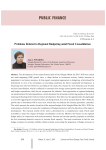
Problems related to regional budgeting amid fiscal consolidation
Статья научная
The development of the major financial plan of the Vologda Oblast for 2018-2020 was carried out amid stagnating GRP growth rates, a sharp decline in investment activity, further decrease in population's real money incomes. In this regard, conceptual approaches to budgeting, which should be determined in view of its orientation on providing conditions for future sustainable development, is becoming more relevant. However, according to the study, the concept of a new financial cycle is based on fiscal consolidation, which is reflected in extremely low average annual growth rates of own revenues and budget expenditure which do not compensate for inflation. Such approaches to regional budgeting are predetermined by federal guidelines, which absolutize the principle of achieving surplus at the cost of reducing the funding of the territory's future development. Year after year, the opportunities of using budget as a tool for triggering the investment policy are being missed...
Бесплатно
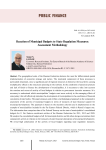
Reaction of municipal budgets to state regulation measures: assessment methodology
Статья научная
The geographical scale of the Russian Federation dictates the need for differentiated spatial implementation of economic strategy and tactics. The municipal component of these processes is particularly important, since a significant part of regional resources is formed at the local level, causing multiplicative effects in the structures operating in the territory. In the conditions of sanctions pressure and lack of funds to finance the development of municipalities, it is necessary to take into account the reaction and extent of activity of local budgets in relation to government incentive measures. It is necessary to understand which municipalities’ budgets react more actively to the managing effects of state policy; this will effectively stimulate the development of municipalities in the conditions of financial constraints of state bodies. The paper proposes and verifies a methodological approach to the comparative assessment of the activity of municipal budgets in terms of measures of state financial support for municipal development. The approach is based on the maximin criterion and is implemented on the example of municipalities included in the Far Eastern Federal District, which is Russia’s largest one. The information base comprises data of the Federal Treasury on the state of municipalities’ consolidated budgets for 11 Far Eastern constituent entities of the Russian Federation for 2011, 2015 and 2020. We analyze the consolidated budgets of all 164 municipal districts and 66 urban okrugs and estimate their comparative activity in relation to the measures of state financial stimulation of municipal development. We reveal high polarization of the activity of local budgets regarding state regulation measures. We show that the budgets of urban okrugs react more actively to government measures than the budgets of municipal districts. The budgets of urban districts formed a group of local budgets with the most active response to state regulation measures. Nevertheless, the transition of the Magadan and Sakhalin oblasts to single-level local government systems consisting only of urban okrugs by 2020 did not contribute to increasing the activity of the budgets of urban okrugs in these regions in relation to state regulation measures in comparison with other municipalities of the Far Eastern Federal District. The proposed mechanism makes it possible to provide territorial administration bodies with methodological tools for in-depth analysis and comparative assessment of the extent of activity of municipal budgets in relation to state regulation measures.
Бесплатно
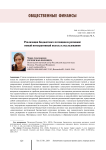
Realization of the regions’ budget capacity: a new integrative approach to the research
Статья научная
The paper investigates theoretical aspects related to the implementation of budget capacity at the stages of its formation and use. Having studied the determinants of socio-economic development contained in various economic doctrines, and taking into consideration the modern context of the functioning of the Russian economy, we show that the realization of budget capacity is an important factor in socio-economic development. The systematization of diverse views on the essence, definition of a set of controversial issues regarding the content and problems of implementing the regions’ budget capacity shows that the theoretical and methodological basis for its formation and use is limited. The paper considers the economic category “region’s budget capacity” from the perspective of integrating resource, fiscal and institutional characteristics, representing a set of not only created, but also attracted gratuitous / non-gratuitous budget resources, as web as reserves that can be realized under the influence of external / internal constraints and incentives. This interpretation makes it possible to specify the concept of “maximum achieved budget capacity of the region” as a capacity that has been implemented, and “the maximum achievable budget capacity of the region” as a set of implemented, reserve and hidden capacities. The article substantiates basic provisions of the integrative approach. The materials can be used in educational activities in studying disciplines in the field of finance, economics and management; they can also be useful to researchers as a basis for further research, and to management bodies of different levels to substantiate management decisions.
Бесплатно

Reflection of expenditure priorities in regions’ budget planning
Статья научная
The paper investigates the extent to which the strategic and budgetary documents of constituent entities of the Russian Federation reflect a multi-scenario approach to forecasting budget parameters and identify spending priorities. The analysis is based on the example of the regions included in the Northwestern Federal District. The relevance of the study is due to the fact that budget policy as a whole has a multi-scenario nature. Therefore, in order to increase the effectiveness of public administration on the part of the authorities, it is important to assess the risks of budget execution and develop a response plan to minimize their negative consequences, which requires, among other things, prioritization of expenditures. The paper uses methods of structural and substantive analysis of regulatory and program documents of strategic and budgetary planning at the level of constituent entities of the Russian Federation, the method of rating regional budget planning documents according to the authors’ criteria and the method of grouping budget expenditures within regional projects, which are a decomposition of federal projects. The scientific significance of the study lies in formulating the problem of using a multi-scenario approach in the development of budget planning documents and reflecting spending priorities in them, assessing the severity of this problem at the regional level and common ways to address it. The novelty of the work lies in the fact that for the first time all the main documents of budget forecasting and planning in the regions of the Northwestern Federal District have been studied. It has been established that the vast majority of budget forecasts and the main directions of budget policy are presented only in the basic version. Strategic and budget planning documents virtually do not offer a multivariate forecast of regional budget revenue and expenditure items. Consequently, spending priorities are not set properly. It is shown that a significant proportion of actual regional expenditures coincide with federal priorities and they reflect the list of expenditure obligations stipulated in federal legislation. The theoretical significance of the study lies in substantiating the need to apply a multi-scenario approach to the disclosure of budget policy priorities at the regional level, the practical significance consists in updating the details of documents for medium- and long-term strategic and budgetary planning – in preparing a separate section with disclosure of information on a multi-scenario approach to forecasting and on priority areas of spending
Бесплатно
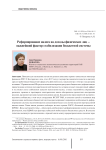
Reforming individual income tax is the crucial factor in stabilizing the budgetary system
Статья научная
The reason for writing this article was a statement of the First Deputy Finance Minister Tatyana Nesterenko who claimed that in 2017 the government would run out of money to pay salaries to budgetary sphere employees [3]. Indeed, the reserves accumulated in the fat years are running out1. The Government of the Russian Federation finds the following sources to cover the growing budget deficit: first, privatization of the remnants of state property, which will create a momentary effect and will not become a stable channel for filling the treasury; and second, major cuts on spending that on the eve of the electoral cycle can aggravate protest moods of Russians caused by a sharp deterioration of the standard of living. The majority of representatives of the expert and scientific community, including ISEDT RAS employees, consider the urgent need to reform the system for taxation of individual income tax by introducing a progressive tax scale as one of the main solutions to the growing imbalance of the budgetary system...
Бесплатно
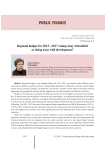
Regional budget for 2015-2017: doing away with deficit or doing away with development?
Статья научная
Regional budget in the Vologda Oblast for 2015-2017 was formed under difficult socio-economic conditions caused not only by a longstanding dependence of Russia’s economy and its budget system on the external economic environment, but also by a number of new factors associated with the aggravation of geopolitical tensions and the application of sectoral sanctions by Western countries. Despite an uncertainty in economic development trends, the new budget is announced to be deficit-free. It would seem that the balance of revenues and expenditures, a fundamental principle of the budget system, has been achieved. However, an analysis of the expenditure part of the budget shows that the balance is achieved at the expense of introducing the austerity regime followed by the restriction of all directions of funding. For 2015-2017 the share of the regional budget expenditures in GRP will decrease to 9.8% vs.13.6% in 2014. If macroeconomic dynamics maintains its downward trend, such fiscal policy in the long term will suppress the economy even more significantly and will ultimately lead to the taxable capacity reduction...
Бесплатно

Regional budget for 2017-2019: surplus or economic growth?
Статья научная
At the end of 2016, the Vologda Oblast approved its budget for 2017-2019. At first glance, its parameters are quite optimistic if we recall that from 2009 to 2015 the budget was significantly unbalanced. The planned annual surplus of 2.5 billion rubles is planned in the upcoming budget cycle. The budget surplus exceeding this sum was registered only in 2004. These projections are not based on the expected sustained economic growth, but on the terms of agreements with the Ministry of Finance of the Russian Federation on the allocation of financial assistance to the oblast in the form of budget loans. The forecast of socio-economic development elaborated by the Vologda Oblast Government retains low growth rates of all macroeconomic indicators; due to this fact it is unlikely that sufficient financial resources could be generated: the average annual growth rate of the budget's own revenues will not reach even 4%. The positive balance of the treasury is expected to be reached with the help of fiscal consolidation: the amount of government spending as a share of gross regional product will decrease to 9% to 2020 against 13% on average over the period of 2005-2016...
Бесплатно
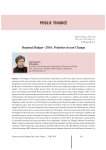
Regional budget-2016: priorities do not change
Статья научная
The budgets of all levels of the Russian Federation for 2016 were drawn up in conditions of the systemic social and economic crisis in the country, the worsened foreign situation, connected with the instability of commodity markets and the strengthening of anti-Russian sanctions. These factors prompted the Russian Government to abandon the practice of three-year budget planning and return to a one-year budget. The results of the budget process show that the pressure on sub-federal budgets continues to grow. According to the ISEDT RAS calculations, 76 of the 85 regions had a deficit budget in 2015, in 60 regions the real income tax payments decreased and the debt burden exceeded 50% of their own revenues. Unfortunately, the Russian Government did not propose any measures to address the budget crisis of regions observed since 2012. On the contrary, the primacy of inter-budgetary cooperation was to shift social obligations from the state to the RF subjects and replace grant financial support of these commitments by budgetary loans...
Бесплатно
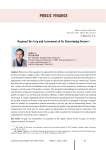
Regional tax gap and assessment of its determining factors
Статья научная
Reduction of the tax gap at the regional level contributes to development of tax potential and the increase of regions’ budget security. The purpose of the article is to study the tax gap at the regional level in the Russian Federation (RF) on the basis of a comprehensive assessment of factors that determine it. Approaches to the determination of the tax gap at regional and national levels are summarized. Factors that form the tax gap are defined. Due to the purpose of the study, it includes the amount of taxes and fees’ arrears, the amount of additional taxes and fees in case of tax inspections’ continuous coverage of taxpayers, and the scale of the shadow economy. The developed methodology for analyzing the structure and dynamics of regional tax gap factors is presented. It allows assessing its size, structure, and the work quality of region’s tax and financial authorities. Besides, it allows identifying opportunities for reducing the tax gap. A variant of grouping entities of the Federation regarding the state and prospects of reducing the tax gap, formed on the basis of the ratio of its level and dynamics, is proposed. Grouping of regions helps to conduct its comparative analysis according to the tax gap and its determining factors. The potential for reducing the tax gap in Russia by improving the quality of tax administration has been largely implemented. The work with tax arrears opens up opportunities for financial and tax authorities. The shadow economy has the largest share in the tax gap, which actualizes the importance of conducting the comprehensive work of the state to legalize it.
Бесплатно

